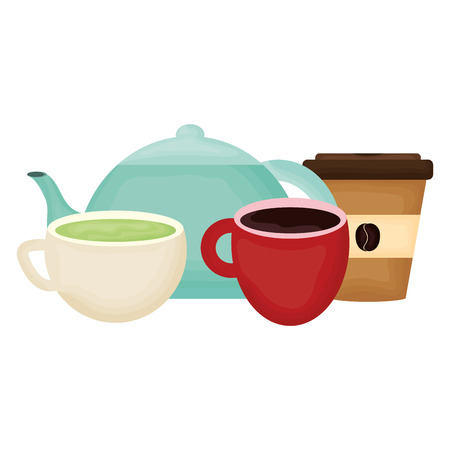Understanding Coffee Grind Sizes
When it comes to making great coffee, grind size is a game-changer. Whether youre brewing a rich French press or a smooth cold brew, the size of your coffee grounds affects everything from flavor to brew time. Lets break down what grind size really means and how it impacts your cup.
What Are the Different Grind Sizes?
Coffee grind sizes range from extra coarse to super fine. Here’s a simple guide:
| Grind Size | Description | Best For |
|---|---|---|
| Extra Coarse | Chunky, like peppercorns | Cold Brew |
| Coarse | Similar to sea salt | French Press, Percolator |
| Medium-Coarse | Slightly finer than coarse salt | Chemex, Clever Dripper |
| Medium | Sandy texture, like regular beach sand | Drip Coffee Makers, Pour Over (like Hario V60) |
| Medium-Fine | Smoother than sand but not powdery | AeroPress (short brew time) |
| Fine | Smooth and soft, like table salt | Espresso Machines, AeroPress (longer brew time) |
| Extra Fine | Powdery, like flour | Turkish Coffee |
The Role of Particle Size in Extraction
The size of your coffee grounds controls how quickly water flows through them during brewing. This process is called extraction. Heres why it matters:
- Larger particles (coarse grinds): Water moves through quickly, leading to a slower extraction. This can give you a lighter body and more clarity—perfect for cold brew or French press.
- Smaller particles (fine grinds): Water moves slowly and extracts more flavors. Great for espresso or Turkish coffee where intensity and richness matter.
A Quick Look at How Grind Size Affects Flavor:
| Brew Method | Recommended Grind Size | Taste Profile |
|---|---|---|
| French Press | Coarse | Smooth, full-bodied, less acidic |
| Chemex Pour Over | Medium-Coarse | Crisp, clean flavors with bright notes |
| AeroPress (short brew) | Medium-Fine | Mellow with balanced acidity and sweetness |
| Espresso Machine | Fine | Bitter-sweet, bold, concentrated flavors |
| Cold Brew | Extra Coarse | Mild, smooth, low-acidity taste even after long steeping time |
This understanding of grind sizes sets the foundation for dialing in the perfect brew method—from French press to cold brew and everything in between.
2. Brew Methods and Their Ideal Grinds
Getting the right grind size is one of the most important steps in brewing a great cup of coffee. In the U.S., coffee lovers use a variety of brew methods—each requiring a specific grind size to bring out the best flavor. Let’s break down the most popular brewing styles and match them with their ideal grinds.
French Press
The French press is a classic method that delivers a bold, full-bodied cup. Since it uses full immersion and a metal mesh filter, you’ll want a coarse grind to keep grounds from slipping through and to avoid over-extraction.
Ideal Grind: Coarse
Think sea salt texture—chunky and gritty.
Pour-Over (e.g. Hario V60, Chemex)
Pour-over brewing gives you more control over the water flow and extraction time. A medium grind allows water to pass through at just the right speed for balanced flavor.
Ideal Grind: Medium to Medium-Fine
A texture similar to sand works best here. Use slightly finer grinds for cone-shaped drippers like the Hario V60 and slightly coarser for flat-bottomed ones like the Kalita Wave.
Drip Coffee Makers (Auto Drip)
This is one of the most common home brewing methods in America. Most drip machines are calibrated for a medium grind, which helps extract enough flavor during the brew cycle without clogging the filter.
Ideal Grind: Medium
The consistency should resemble granulated sugar.
Espresso Machines
Espresso requires pressure and short extraction time, so a fine grind is essential. Too coarse, and your espresso will be weak; too fine, and it can taste bitter or clog your machine.
Ideal Grind: Fine
The texture should feel like table salt or flour—smooth but not powdery.
Cold Brew
This slow steeping method calls for a very coarse grind since the coffee sits in cold water for 12–24 hours. A coarse grind prevents over-extraction and makes filtering easier.
Ideal Grind: Extra Coarse
Bigger than French press—think rock salt or cracked peppercorns.
Brew Method & Grind Size Quick Guide
| Brew Method | Grind Size | Description |
|---|---|---|
| French Press | Coarse | Chunky like sea salt |
| Pour-Over (Hario V60, Chemex) | Medium to Medium-Fine | Sandy texture; adjust by dripper type |
| Drip Coffee Maker | Medium | Sugar-like consistency |
| Espresso Machine | Fine | Smooth like table salt or flour |
| Cold Brew | Extra Coarse | Larger chunks; similar to rock salt |
Selecting the right grind size based on your brew method makes all the difference—it ensures proper extraction, better flavor, and an overall better coffee experience every time you brew at home.

3. Grinder Types & How They Affect Your Brew
When it comes to brewing the perfect cup of coffee—whether its a bold French Press or a smooth Cold Brew—the type of grinder you use plays a huge role. Not all grinders are created equal, and understanding the differences between them can help you get the flavor youre aiming for.
Blade Grinders vs. Burr Grinders
There are two main types of coffee grinders youll find in most American kitchens: blade grinders and burr grinders. Heres how they stack up:
| Feature | Blade Grinder | Burr Grinder |
|---|---|---|
| How It Works | Uses spinning blades to chop beans | Uses two burrs (flat or conical) to crush beans evenly |
| Grind Consistency | Inconsistent (mix of fine and coarse grounds) | Consistent grind size across all grounds |
| Control Over Grind Size | Limited control, depends on grind time | Precise control with adjustable settings |
| Price Range | Budget-friendly ($15–$30) | Higher cost ($40–$300+) |
| Best For | Casual drinkers or beginners | Coffee enthusiasts who want consistency |
Which One Should You Choose?
If You Love French Press or Cold Brew…
You’ll want a grinder that delivers coarse, uniform grounds. A burr grinder is your best bet here. Blade grinders often leave you with uneven chunks, which can lead to over-extraction and bitterness in immersion brews like French Press and Cold Brew.
If Youre Brewing with a Drip Machine or Pour-Over…
A medium grind is ideal, and consistency is key to avoid sour or bitter notes. Again, burr grinders shine here thanks to their ability to dial in specific grind sizes.
If Budget Is a Concern…
A blade grinder can still get the job done if youre just starting out. To improve results, try pulsing the grinder instead of holding it down continuously, and shake it gently while grinding to distribute particles more evenly.
Pro Tip:
No matter which grinder you choose, always grind your beans just before brewing for the freshest flavor possible.
Selecting the right grinder isn’t just about price—it’s about finding one that fits your coffee style. Whether youre all about that bold French Press or into chilled Cold Brew vibes, matching your grind tool to your brew method makes all the difference.
4. Adjusting Grind for Taste Preference
Once you’ve matched your grind size to your brew method—like coarse for French press or extra fine for espresso—it’s time to tweak it based on flavor. This is where the magic happens: dialing in the perfect grind for your taste preferences can take your cup from good to amazing.
Understanding How Grind Affects Flavor
The size of your coffee grounds plays a big role in how your coffee tastes. Heres a quick breakdown:
| Grind Size | Taste Outcome |
|---|---|
| Too Coarse | Under-extracted, sour, weak |
| Too Fine | Over-extracted, bitter, harsh |
| Just Right | Balanced, smooth, flavorful |
Tweaking Based on Common Taste Issues
Sourness (Under-Extraction)
If your coffee tastes overly sour or sharp, it likely means youre under-extracting. Try grinding slightly finer to allow more surface area contact and better extraction.
Bitterness (Over-Extraction)
A bitter taste usually comes from over-extraction. If that’s the case, adjust by grinding a bit coarser. This slows down extraction and helps avoid pulling out those bitter compounds.
Weak or Watery Coffee
If your cup lacks strength or body, your grind might be too coarse—or you may not be using enough coffee. Try a finer grind and check your brew ratio.
A Simple Guide to Adjusting Grind for Taste
| Taste Problem | Tweak Your Grind |
|---|---|
| Sour / Tart | Grind finer |
| Bitter / Astringent | Grind coarser |
| Bland / Weak | Slightly finer grind or more coffee |
A Few Tips to Keep in Mind:
- Tweak in small steps: Tiny changes go a long way. Move one notch at a time on your grinder.
- Brew method matters: Espresso reacts faster to changes than cold brew, so be extra careful with adjustments.
- Taste test often: The best way to know what works? Sip as you go!
Your grinder isn’t just a tool—it’s the key to unlocking the flavors you love most in your daily cup.
5. Grind Consistency Tips for Home Brewers
Getting the right grind size is key to brewing great coffee, whether youre making a French press or a cold brew. But even if you’ve dialed in the right setting on your grinder, your results can still vary if your grind isn’t consistent. Here are some practical tips to help you achieve a uniform grind at home, every time.
Clean Your Grinder Regularly
Coffee oils and tiny particles build up in your grinder over time, which can affect both flavor and consistency. For best results:
- Burr grinders: Clean out old grounds weekly with a brush or soft cloth. Deep clean monthly by removing burrs and wiping them down.
- Blade grinders: Wipe clean after each use. Use grinder cleaning tablets occasionally to remove stuck-on oils.
Store Your Coffee Beans Properly
The way you store your beans can impact how they grind. Beans that are too oily, stale, or overly dry wont grind evenly. Follow these guidelines:
- Airtight container: Use containers with tight-fitting lids to keep out air and moisture.
- Cool, dark place: Avoid storing beans near heat or sunlight—this can age them faster.
- No fridge or freezer: The moisture from condensation can ruin the beans’ surface texture.
Use the Right Grinder for Your Brew Method
Burr grinders are generally better than blade grinders for consistent results. Heres a quick comparison:
| Brew Method | Recommended Grinder | Grind Size |
|---|---|---|
| French Press | Burr Grinder | Coarse |
| Chemex / Pour Over | Burr Grinder | Medium-Coarse to Medium |
| AeroPress (2-3 min) | Burr Grinder | Medium-Fine |
| Espresso | Burr Grinder (Stepless preferred) | Fine |
| Cold Brew | Burr Grinder | Extra Coarse |
Grind Just Before Brewing
Coffee starts losing freshness as soon as its ground. To get the most flavor and consistency, only grind what you need right before brewing. This also helps reduce clumping and uneven extraction, especially in finer grinds like espresso.
Tweak and Test Regularly
Your grinder might shift slightly over time, especially if you change bean types or roast levels. Don’t be afraid to adjust settings slightly based on taste or visual cues (like brew speed). Keep notes so you can repeat your favorite results!
A Quick Recap: Home Grinding Essentials
- Keep it clean: A dirty grinder equals uneven grinds and off-flavors.
- Store smart: Fresh beans = better consistency and taste.
- Burr over blade: Invest in a burr grinder for more control.
- Tweak often: Small changes make a big difference in flavor.
If youre serious about matching your grinder settings to different coffee types—from French press to cold brew—these consistency tips will help you elevate every cup without needing café-level gear.

